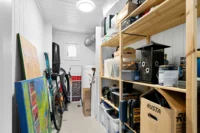- Home
- Articles
- Architectural Portfolio
- Architectral Presentation
- Inspirational Stories
- Architecture News
- Visualization
- BIM Industry
- Facade Design
- Parametric Design
- Career
- Landscape Architecture
- Construction
- Artificial Intelligence
- Sketching
- Design Softwares
- Diagrams
- Writing
- Architectural Tips
- Sustainability
- Courses
- Concept
- Technology
- History & Heritage
- Future of Architecture
- Guides & How-To
- Art & Culture
- Projects
- Interior Design
- Competitions
- Jobs
- Store
- Tools
- More
- Home
- Articles
- Architectural Portfolio
- Architectral Presentation
- Inspirational Stories
- Architecture News
- Visualization
- BIM Industry
- Facade Design
- Parametric Design
- Career
- Landscape Architecture
- Construction
- Artificial Intelligence
- Sketching
- Design Softwares
- Diagrams
- Writing
- Architectural Tips
- Sustainability
- Courses
- Concept
- Technology
- History & Heritage
- Future of Architecture
- Guides & How-To
- Art & Culture
- Projects
- Interior Design
- Competitions
- Jobs
- Store
- Tools
- More
5 Key Architectural Approaches to Strata Management

Strata management involves overseeing the shared areas and facilities of a multi-unit residential or commercial property. It requires a unique combination of administrative, financial, and maintenance tasks to ensure a smooth operation of communal spaces while also addressing the needs of individual property owners.
Architectural aspects of strata properties present challenges that require tailored approaches. These challenges can range from managing shared spaces to ensuring compliance with safety regulations. On top of all, poorly designed buildings may increase maintenance costs, safety hazards, and disputes among occupants.
That’s why architectural approaches are crucial to strata management. In this post, we will discuss five specific approaches, their distinct advantages, and how, if implemented correctly, they streamline the management of strata developments.
Table of Contents
ToggleIntegration of Smart Building Technologies
Smart building technologies are transforming property management. These technologies include automated systems for energy usage, lighting, security, and maintenance monitoring. They can also lower energy costs, improve security, and streamline communication between management and occupants.
Many strata management companies also embrace technologies for administrative work. Take Strata Town, for example. This Australian-based company offers flexible rolling contracts with ongoing service agreements with no fixed end date, allowing them and the property owners to maintain or adjust the working relationship based on evolving needs.
However, the cost of installing smart technology may be a concern for some strata properties, especially older buildings. Retrofitting older structures to accommodate modern systems can be expensive. To address this, property developers and managers can plan phased upgrades or focus on essential systems like security or energy monitoring first, ensuring that the most critical needs are met within a manageable budget.
Sustainable Design and Green Buildings
Sustainable design focuses on creating eco-friendly buildings that minimise environmental impact. This approach includes solar panels, energy-efficient windows, and sustainable building materials. In addition, green roofs, water recycling systems, and natural ventilation can make a property more environmentally friendly.
For strata management, sustainable design provides long-term cost savings by reducing energy and water consumption. Energy-efficient buildings tend to have lower utility bills, benefiting all property owners within the strata scheme. Additionally, green buildings often require less maintenance, particularly when managing heating, cooling, and ventilation systems.

One challenge with sustainable design is the upfront cost of construction or retrofitting. Some eco-friendly materials and systems are more expensive than traditional options. However, many countries offer government grants or tax incentives to promote sustainability, helping to offset initial expenses. Planning carefully during the design phase and choosing materials that balance cost with sustainability can also keep budgets in check.
Maximising Shared Spaces
Shared spaces in strata developments, such as gardens, gyms, and community rooms, are critical for fostering a sense of community among residents. Proper architectural planning ensures that these spaces are designed to be versatile, functional, and low-maintenance. Multi-purpose rooms, for example, can serve different needs at various times, while outdoor areas can be landscaped with plants that require minimal upkeep.
The effective design of shared spaces greatly benefits strata management. Well-planned communal areas increase the property’s overall value and increase residents’ satisfaction. These spaces also promote social interaction, which can lead to a more harmonious community, reducing conflicts and grievances that strata managers might otherwise need to address.
On the other hand, poorly designed or underutilised shared spaces can become a financial burden. High maintenance costs, limited usability, or inflexible designs can frustrate residents. To prevent this, architects should consider future-proofing these spaces by using durable materials and creating flexible designs that can easily adapt to changing needs. Involvement from strata managers and residents during the design phase can also ensure that spaces meet everyone’s expectations – an approach commonly supported by experienced strata management companies.Furthermore, proper residential strata insurance coverage can help mitigate financial risks associated with unforeseen damages or liabilities related to shared spaces, providing additional peace of mind for all stakeholders.
Optimising Vertical and Horizontal Layouts
The architectural planning of strata properties must carefully consider the vertical and horizontal layouts of buildings. In high-rise structures, vertical layouts need to account for the efficient movement of residents and services while minimising noise, overcrowding, and lift delays. For more sprawling developments, horizontal layouts must be designed with accessible pathways and efficient land use.
Optimising these layouts can greatly reduce day-to-day management challenges. For instance, well-planned building layouts can streamline cleaning schedules, minimise disruptions, and ensure maintenance staff can easily access necessary areas. Effective vertical layouts can also prevent overcrowding in lifts and common areas, improving resident satisfaction.
Potential issues can arise if layouts are not designed with careful attention to future management needs. Poor layouts can lead to congestion in shared corridors, noise complaints, or even inefficient use of space. To address this, architects should work closely with strata managers during the planning phase to identify potential problem areas and ensure that designs reflect the community’s current and future needs.
Safety and Accessibility Compliance
Ensuring that a building complies with safety and accessibility regulations is essential for the long-term success of a strata development. This includes compliance with fire safety standards, building accessibility for people with disabilities, and providing proper emergency exits. Architects must carefully consider these elements during the design phase to avoid future legal and financial complications.
From a strata management perspective, compliance with safety and accessibility standards ensures the well-being of residents and reduces liability risks. Well-designed buildings are easier to maintain and less likely to require costly upgrades to meet changing laws or regulations. Accessibility features, such as ramps, lifts, and wide doorways, also make the property more inclusive, benefiting a broader range of residents.
However, compliance can sometimes be expensive, especially for older buildings that need to be retrofitted to meet current standards. To mitigate costs, strata managers can prioritise essential upgrades, such as fire safety and accessibility modifications. Additionally, spreading out renovations over time can reduce financial strain on property owners.
Final Thoughts
Architectural approaches are essential for effective strata management, as they help create functional, safe, and easier-to-maintain buildings. Without them, properties may face higher maintenance costs, increased safety risks, and inefficient use of space, leading to frustration for residents and more challenges for strata managers.
illustrarch is your daily dose of architecture. Leading community designed for all lovers of illustration and #drawing.
Submit your architectural projects
Follow these steps for submission your project. Submission FormLatest Posts
Why Smart Bin Rental Strategy Shapes Better Architecture Projects
Picture this: you’re standing before your dream architectural project, blueprints approved, permits...
The 10 Most Iconic Buildings in the World and Their Stories
From ancient marvels like the Great Pyramid of Giza to modern icons...
How to Choose the Best Balloon Garland Kit for Your Event Theme
Balloon garlands are now a very popular decoration for today’s celebrations, including...
Dependable Service for Everyday Appliance Problems
When a washer stalls mid-cycle or a fridge warms up, you need...











Leave a comment